Detection
A Hook Echo signature is usually a hook-like appendage to the low-level radar reflectivity echo of a supercell. The Hook Echo is located in the vicinity of the updraft, typically on the left-rear flank of cyclonic storms in the southern hemisphere, underneath a sloping echo overhang and below the stormís echo top. Hook Echoes may possess a classic "hook shape", but depending on the point in the lifecycle captured by the radar volume scan and radar resolution, they may appear as an "appendage" or "pendant" (see figure below). The Hook Echo forms when precipitation descends from higher levels behind the storm's main updraft (similar to hydrometerors descending within the upshear branch of a Bounded Weak Echo Region). Most, if not all Hook Echoes are associated with supercells in which the descending precipitation is often entrained into the circulation of the storm's mesocylone. In some cases this also leads to spiral-shaped Hook Echoes at low levels.
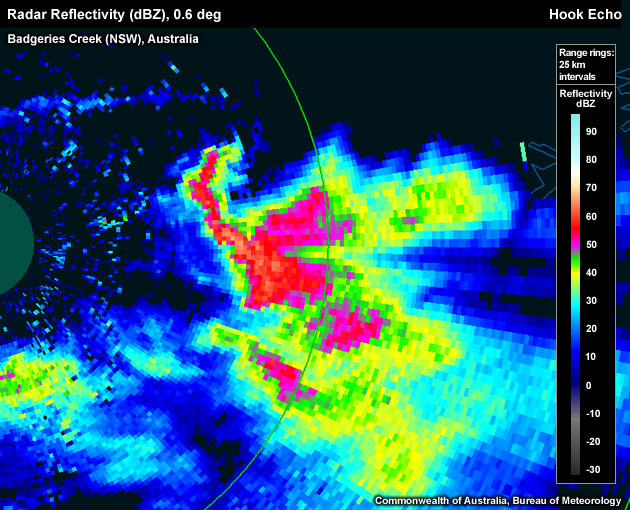
A Hook Echo wrapping around the updraft in the low-level volume scan.
To determine if the signature you are seeing is a Hook Echo use the following technique:
Reflectivity: PPI/Plan View
- Step up in elevation scans until you run out of >50 dBZ echoes.
- Step down one elevation scan.
- Centre cursor on the upshear side of >50 dBZ core (this is to account for storm movement and strong winds aloft which leads to echo translation between the lowest- and the storm top-level scans).
- Set a reference point.
- Step down to the lowest elevation scan. This reference point should be the location of your updraft.
- Is there a "pendant" or "hook" shaped echo wrapping around the updraft (the location of the reference point)? If so, a Hook Echo or developing Hook Echo may be present.
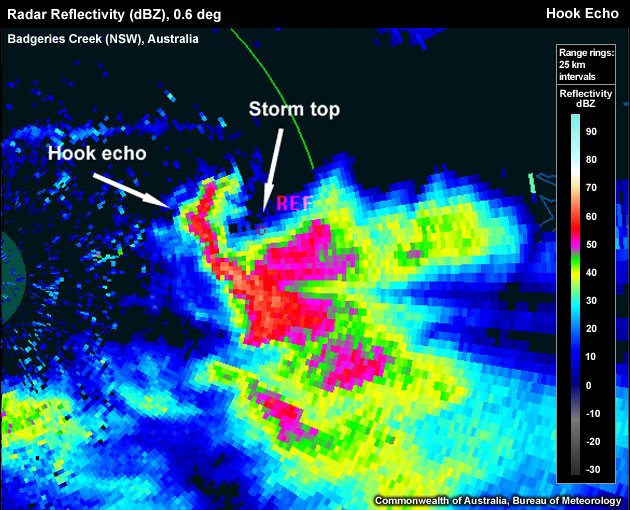
A rather long Hook Echo wrapping around the low-level circulation of a storm in the low-level PPI scan.
For confirmation of the presence of a true Hook Echo, switching to the velocity field may show a low-level mesocyclone. Note: Sometimes Hook Echoes form before a low-level mesocyclone is evident on radar. Check higher elevations for a mid-level mesocyclone. Also, a Hook Echo has been postulated as being the low-level reflection of the upshear branch of a Bounded Weak Echo Region, so check for a Bounded Weak Echo Region above the suspected Hook Echo signature.
Potential Difficulties in Detection
- Close proximity to other storms - The nearby storms may affect the detection of the signature.
- Radar sampling:
- The thunderstorm is too far away from the radar. This can affect the detection in 2 ways:
- Far from the radar, the individual pixels represent a much larger area. This can then make a small or developing Hook Echo difficult to diagnose due to the smoothed data.
- The radar overshoots the low-level signature
- Attenuation, especially with C-band radars - If the Hook Echo is located on the far side of the thunderstorm, and the radar beam must pass through a substantial core to reach the Hook Echo, the signature may be washed out.
- The thunderstorm is too far away from the radar. This can affect the detection in 2 ways:
Examples of Hook Echoes
Use the radio buttons or click the image to switch between reflectivity and velocity imagery:
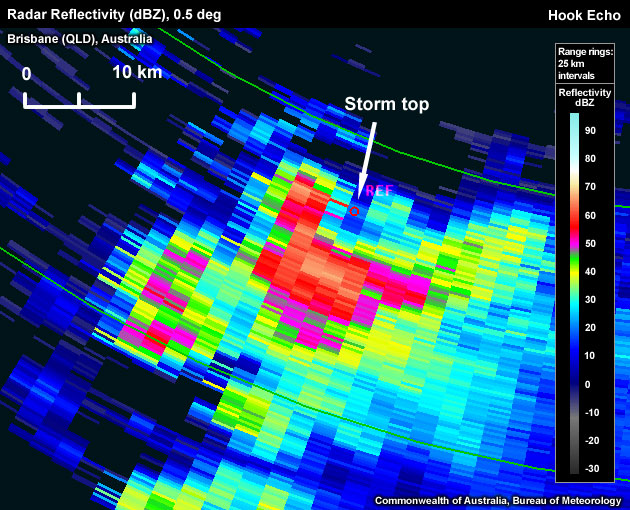
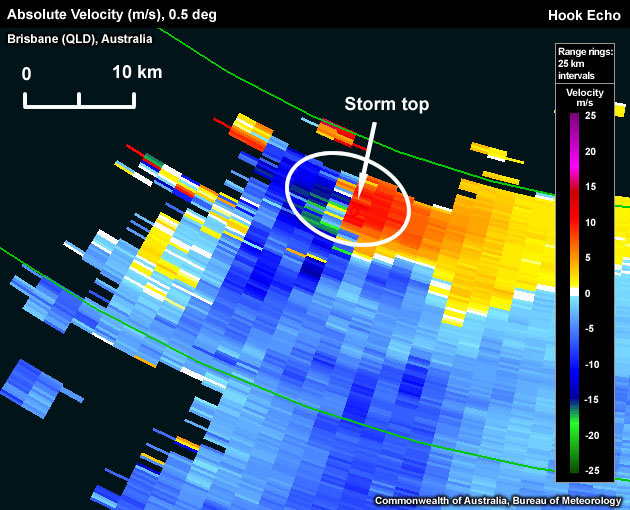
"Broad" hook, evident in the reflectivity, co-located with a broad low-level mesocyclone (oval) seen in the velocity field at the same elevation.
Use the radio buttons or click the image to switch between reflectivity and velocity imagery:
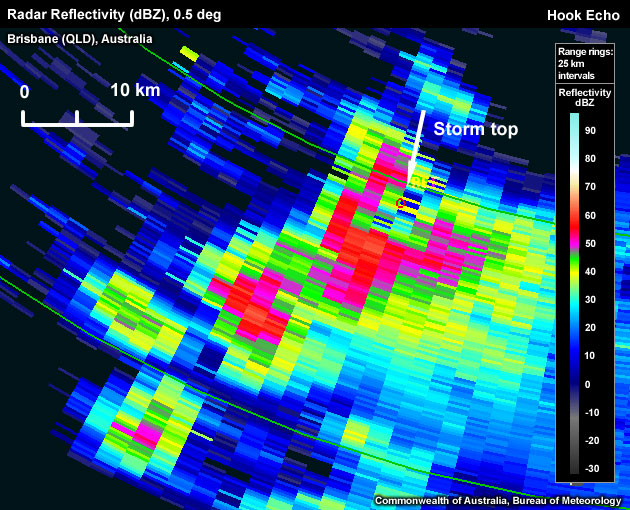
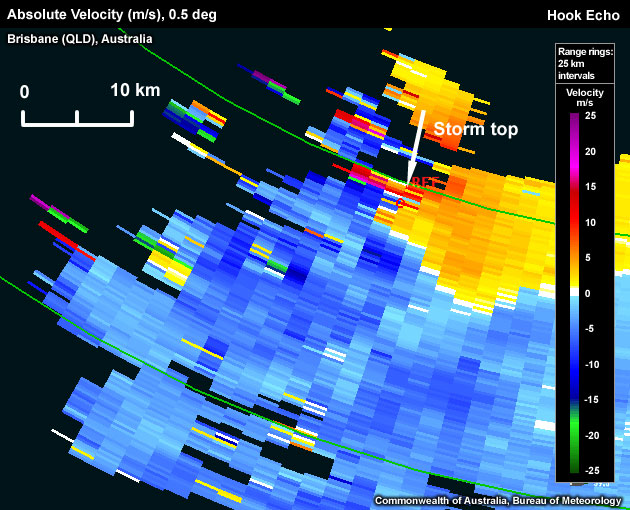
Hook Echo embedded within the inbound branch of a low-level mesocyclone. The mesocyclone centre is located to the east of the hook.
Use the radio buttons or click the image to switch between reflectivity and velocity imagery:
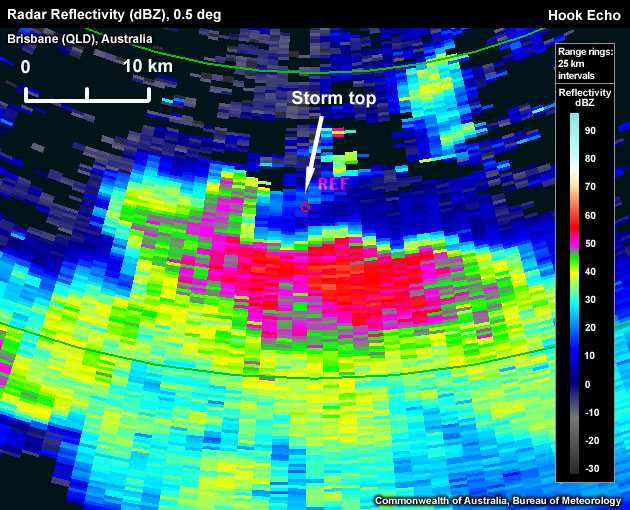
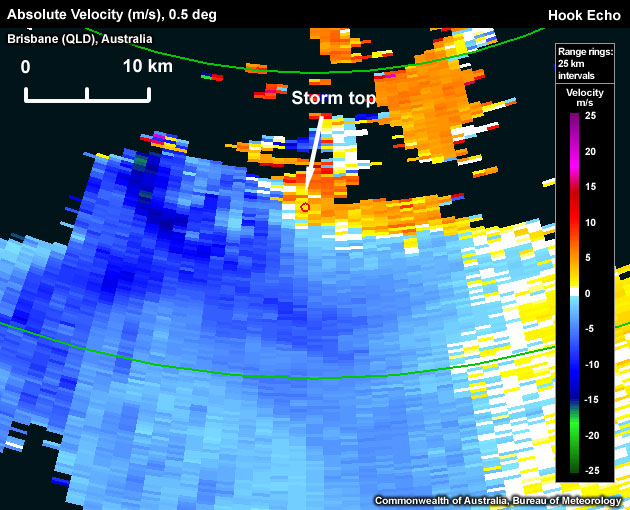
Hook echo co-located with a low-level mesocyclone.
Use the radio buttons or click the image to switch between reflectivity and velocity imagery:
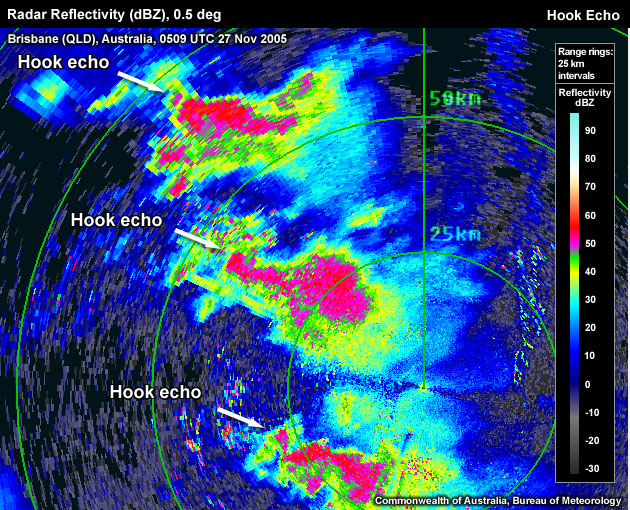
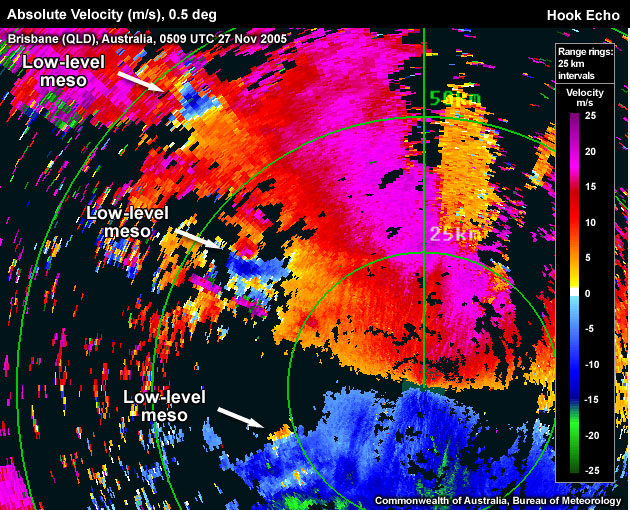
Three supercells with Hook Echoes co-located with low-level mesocyclones.
Hook Echo Look-a-Likes
The Hook Echo is one of the most commonly misdiagnosed severe thunderstorm signatures! Thunderstorms often produce a "tail" shaped echo, which is often mistaken for a developing Hook Echo. Understand the following look-a-like traps to help correctly diagnose the Hook Echo signature.
- Incorrect storm relative location - The easiest way to confirm that a reflectivity appendage might indeed be a Hook Echo is by noting the location of the echo. The Hook Echo must be collocated with the updraft and, usually, low-level rotation, or at least associated with mid-level rotation. There are a number of reasons why the storm produces reflectivity appendages, such as a multicellular storm with close proximity of the "flanking line" of developing cumulus towers or updraft cores.
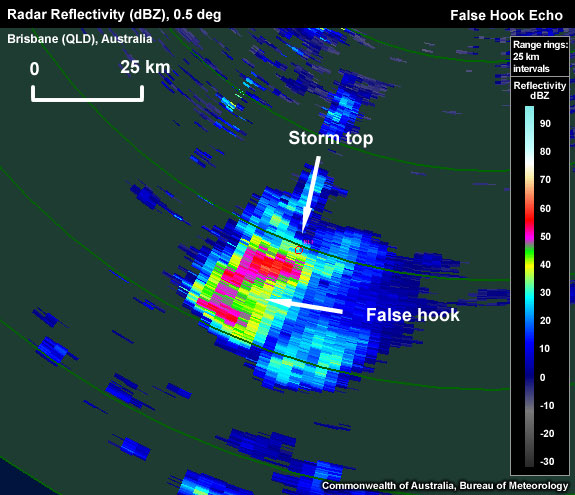
Low-level hook shape on southern side of storm, whereas the updraft/storm top is on the northern side of the storm. False hook signature on the southern flank.
- Incorrect elevation scan - The Hook Echo is a primarily a low-level signature, so should not be detected solely at higher elevations.
Hook Echoes are essentially a supercell signature. To confirm that you are dealing with a supercell and anticipate its potential development and movement, see the Conceptual Model section.
